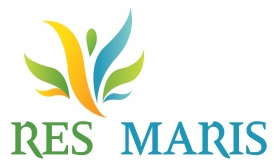RES MARIS – “Regenerating threatened habitats in the marine area of Capo Carbonara, Sardinia”
LIFE13 NAT/IT/000433

Object
Collection and multiplication of the germplasm of the species typical of habitat 2270* to obtain seeds genetically representative of the natural population.
Objective
To identify the best techniques for the collection, germination and multiplication of species of structural and functional importance for habitat restoration 2270* "Dunes with forests of Pinus pinea and/or Pinus pinaster".
Good Practice Description
First of all it was necessary to know the plants present in the area; then to select the species of structural and functional importance and among these the plants (about 50% of individuals) from which to collect the germplasm (seeds), on the basis of national guidelines and the calendar of fruiting, thus following a real plan of collections.
All the collected material was then processed at the germplasm bank of Sardinia where, after a period of post-maturation/quarantine, it was subjected to cleaning (manual and/or mechanical), selection and quantification.
For each of the target species, germination tests were then carried out to identify the most effective protocols for large-scale nursery production.
The multiplication of plants must take place in a controlled environment, without the use of fertilizers, pesticides and phytochemicals and under the lead of highly specialized personnel.
Territorial Context
Habitat 2270*, in the SAC "Isola dei Cavoli, Serpentara, Punta Molentis and Campulongu" (South of Sardinia), it is located in the innermost part of the stable dunes and occupies about 9 hectares. This is an area with a strong tourist vocation and in fact the main threats are: the direct use of the beaches, the natural or accidental introduction of alien plant species (which currently occupy about 9% of the surface) and the dynamics of submersion and emergence of the beach.
Replicability conditions
The good practice is replicable thanks to the reports produced on the germplasm collections and on the germination and multiplication protocols of the studied species. However, it should be emphasized that collaboration with highly specialized structures such as germplasm banks and nurseries with adequate equipment and personnel is necessary.
Dissemination material
From the LIFE GoProFor database, in the final part of the sheet, it is possible to download some material relating to the project, including final technical report where all the actions are described as well as the "Manual for the collection, study, conservation and ex situ management of the germplasm” of APAT (2006).


